#queen katherine
Explore tagged Tumblr posts
Text

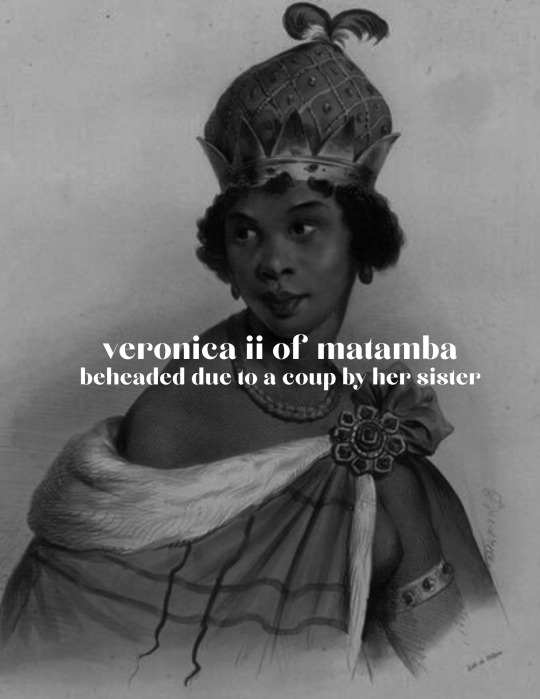

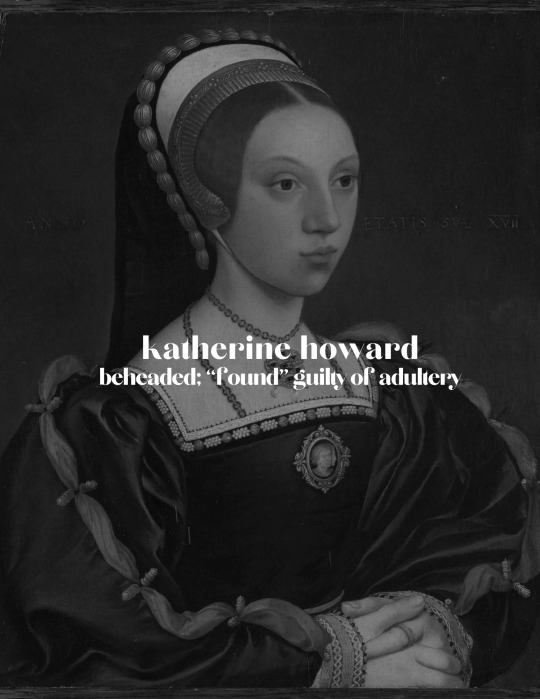
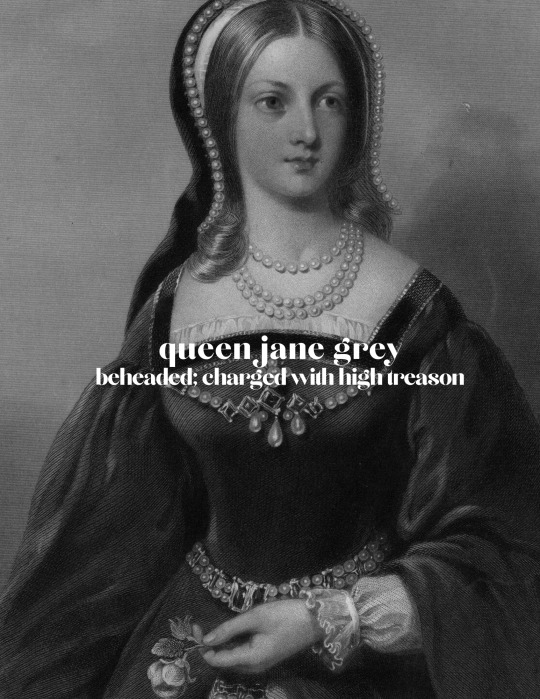
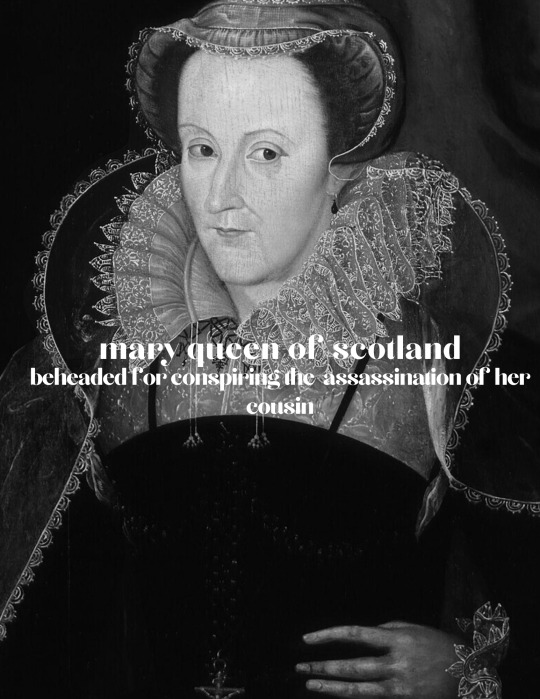
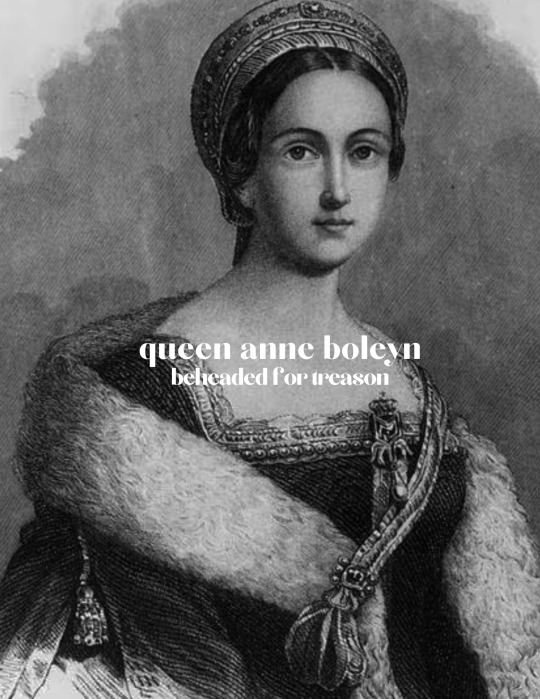


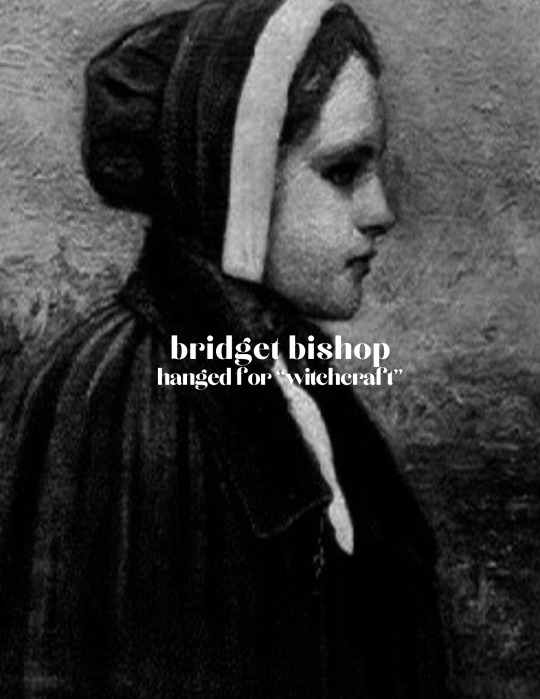


history + women who were executed
#some of them 10000% did not deserve exeution#history#jeanne d'arc#veronica ii of matamba#brunhilda of austrasia#katherine howard#queen jane grey#mary queen of scots#queen anne boleyn#maria of antioch#marie antoinette#bridget bishop#olympe de gouges#fannie efimovna
670 notes
·
View notes
Text


Aemond Targaryen - Art by Katherine Wyvern
"there is never a time when it is OK to ask an abuse victim to absolve their tormentors" -Katherine Wyvern
#aemond targaryen art#vhagar queen of all dragons#house of the dragon art#asoiaf art#katherine wyvern#ewan mitchell
89 notes
·
View notes
Text





"Why should that surprise you, Henry? You have not always been kind to her. I have wept so often to see her alone, abandoned by her father."
JONATHAN RHYS MEYERS and MARIA DOYLE KENNEDY as HENRY VIII and KATHERINE OF ARAGON The Tudors | 'Death of a Monarchy' — S03E10
#get him queen#thetudorsedit#the tudors#henry viii#catherine of aragon#katherine of aragon#periodramaedit#period drama#season 4#s4#ours#*#tudorerasource#tudor era#16th century#gif
212 notes
·
View notes
Text

TUDOR WEEK 2024
It is baaaaack by popular demand!. We are hosting Tudor Week 2024. This is going to be hosted from Monday the 14th of October to Sunday the 20th of October.
The week will go as follows:
Day 1 - Monday, 14th of October: Your Favourite Tudor (members of the family that were born Tudors). Day 2 - Tuesday, 15th of October: Favourite Tudor contemporary quote about or said by the Tudor family. Day 3 - Wednesday, 16th of October: Best Tudor What If? Day 4 - Thursday, 17th of October: Fancast Your Favourite Tudor Family Member. Day 5 - Friday, 18th of October: Favourite Tudor Iconography (e.g. Tudor Rose, Anne Boleyn's falcon, Jane Seymour's Phoenix). Day 6 - Saturday, 19th of October: Favourite Tudor Couple (could include unmarried couples, e.g., Elizabeth I and Robert Dudley). Day 7 - Sunday, 20th of October: Favourite Tudor-related location.
This can cover all events and media that a Tudor family member is present, so from Owen Tudor to Elizabeth Tudor, and may include spouses and acknowledged children of direct members of the Tudor family (if unsure who we cover please check our Family page). We have attempted to make it as broad as possible and no pressure if you are late with some of the days, we will still reblog.
Previous Years: 2021, 2022, 2023
Be sure to tag your posts TudorWeek2024 and DailyTudors, looking forward to seeing your posts!
The Team at DailyTudors
#tudorweek2024#henry vii#henry viii#edward vi#mary i#elizabeth i#owen tudor#catherine de'valois#edmund tudor#margaret beaufort#jasper tudor#catherine woodville#elizabeth of york#arthur prince of wales#katherine of aragon#margaret queen of scotland#james iv of scotland#archibald douglas#henry stuart#anne boleyn#jane seymour#anne of cleves#kathryn howard#catherine parr#mary queen of france#louis xii#charles brandon#henry fitzroy#announcement
156 notes
·
View notes
Text
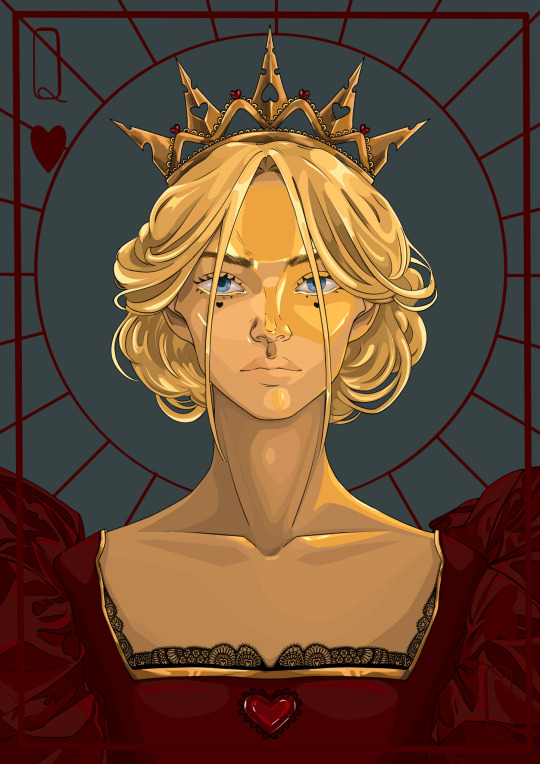
#katherine kent#she was really living her best material girl life#And then the will effect TM happened#dark rise as court cards#The lady as the queen of hearts#dark heir#dark rise#dark rise fanart#my art#fanart#c s pacat
131 notes
·
View notes
Text

this came to me in a dream
#jack frost#toothiana#rotg#rise of the guardians#the bear#frozen#queen elsa#I DON’T KNOW WHAT CAME OVER ME#i thought katherine could be claire but i thought it would be funnier if it’s elsa#although its ooc#and yes bunny is richie in this au#i am simply indulging myself thank you#jelsa????#this is so damn niche#fairyfrost
130 notes
·
View notes
Text


🦇 Women of Horror 🦇
.
The Hex girls, Queen Akasha, Ginger Snaps & Jennifer’s body. 🥀🗡️
.
I’ve been wanting to draw these ladies for so long. These icons had such an impact on my life since childhood, I was raised to be a spooky, powerful force of nature. I love women of carnage!!!
.
These will be turned into stickers soon,as well as other horror girls will be added so STAY TUNED GHOULS!!! 🎃🪦
#artists on tumblr#drawing#fanart#art#sketchbook#artistsoninstagram#digital art#digital fanart#the hex girls#scooby doo#scooby doo and the witch's ghost#gothcore#queen of the damned#akasha#aaliyah#ginger snaps#katherine isabelle#jennifers body#megan fox#horror fanart#horror#horror icons#halloween#spooky art#spooky#stickers#artist on instagram#horror girls#grunge#y2k nostalgia
137 notes
·
View notes
Text
@dranka shout to dranka i love ur character design sheet I wanted to create my own heheheh - the sun queen , kathrine and visander in the curse purple pink dress hahah
Ily dranka 🥺💖💖!!!

Side note sorry been slow with art I have to much going on in my life atm 😔🤧 next project I will officially complete dark heir ch 51 fully with the last two book page into comic form 🤭🤭 and I want to draw Wames and tom 🥺
#dark rise#dark heir#katherine kent#visander#the lady#the sun queen#darkrise spoiler#dark heir spoilers#darkheir#darkrise
122 notes
·
View notes
Text




Katherine McBride from the Catherine: Full Body Official Visual & Scenario Collection ♀VENUS☆TRINITY♂ artbook
#catherine#katherine mcbride#catherine full body#posting these for myself first#one chance queen... one chance
53 notes
·
View notes
Text
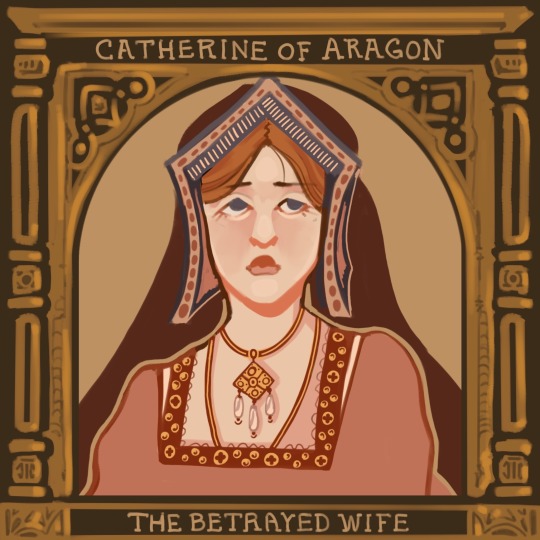
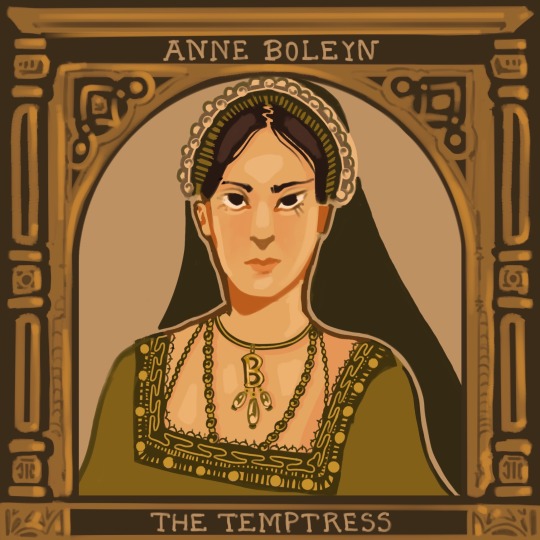


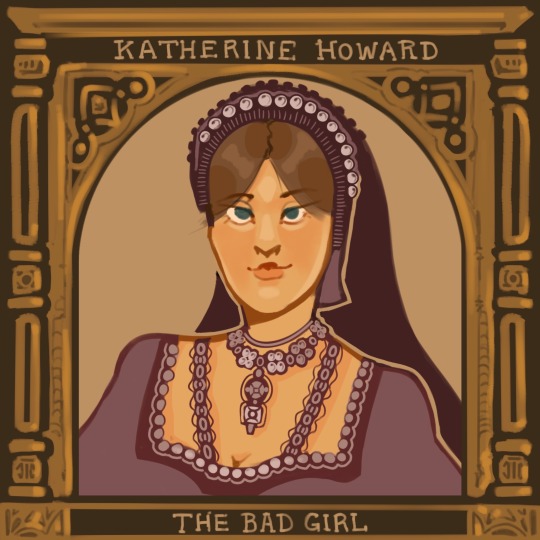
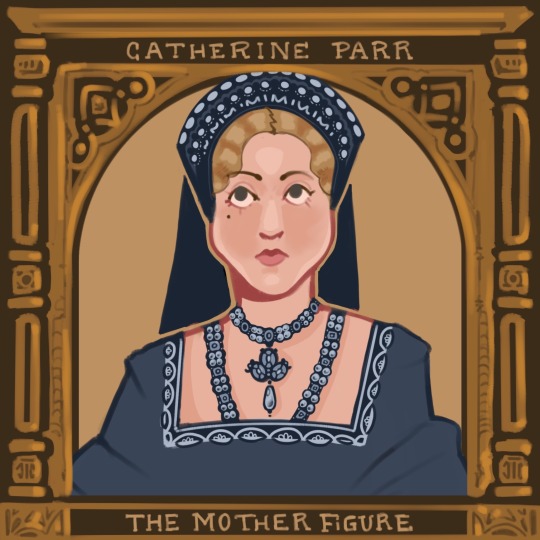
1. Catherine of Aragon (married 1509-1533)
motto: HUMBLE AND LOYAL
Even allowing for tactful hyperbole, it is clear that Catherine, […] did have the kind of youthful prettiness and freshness of appearance that charmed observers, not only the family into which she would marry. It was partly a question of her complexion: her naturally pink cheeks and white skin were much admired in an age when make-up was clumsy in execution, easy to detect and much scorned. Ambassadors abroad, describing princesses to their masters, generally emphasized the tint of the skin, carefully noting whether it was 'painted' or not. A fair complexion like Catherine's was thought to indicate a more serene and cheerful temperament than a 'brown' one. Then Catherine's hair was also fair and thick, with a reddish-gold tint, her features neat and regular in a pleasingly shaped oval face.
Perhaps Catherine's fair colouring, so far from the conventional picture of a dark-visaged Spaniard, reminded onlookers of her one-eighth of English blood: […] 'there is nothing wanting in her that the most beautiful girl should have. '
If her complexion was her chief beauty, Catherine's chief disadvantage was her lack of height. All the grace of her bearing, inculcated over many years at the Castilian court, could not conceal the fact that she was extremely short, even tiny. Years later a loyal defender had to admit that she was 'in stature somewhat mean', while adding quickly 'but bonarly [bonnie] withal'. She was also on the plump side - but then a pleasant roundness in youth was considered to be desirable at this period, a pointer to future fertility. In contrast Catherine's voice was surprisingly low and 'big-sounding' for a woman; and that no doubt contributed to the impression of gracious dignity she left on all observers, making up for the lack of inches.
2. Anne Boleyn (married 1533-1536)
motto: THE MOST HAPPY
Anne Boleyn was not a great beauty. The Venetian ambassador […] pronounced her 'not one of the handsomest women in the world'. […] Anne Boleyn was only moderately pretty.
Some of this lukewarm praise may have been due to the fact that her looks did not accord with the fair-haired, blue-eyed ideal of the time. In theory, dark looks were regarded with suspicion and Anne Boleyn's looks were conspicuously dark: she was 'Brunet' […] Anne Boleyn's olive complexion’ […] her colouring 'rather dark' or sallow 'as if troubled with jaundice', or 'not so whitely as ... above all we may esteem.' She did have a few moles, although she was hardly disfigured by them on the contrary they acted as beauty-spots. Her hair, thick and lustrous as it might be, was extremely dark […] And her eyes were so dark as to be almost black. But then the theory of public admiration was one thing - blondes were supposed to be of cheerful temperament - and the practice of physical attraction was quite another. Clearly in adulthood Anne Boleyn exercised a kind of sexual fascination over most men who met her; whether it aroused desire or hostility, the fascination was there.
The black eyes were sparkling and expressive; and they were set off by those 'dark, silky and well-marked eyebrows' […] on the subject: she knew well how 'to use [her eyes] with effect', whether deliberately leaving them in repose or using them to send a silent message which carried ‘the secret testimony of the heart'. As a result many became obedient to their power. More prosaically, the Venetian ambassador called her eyes "black and beautiful'. Her mouth, described by him as 'wide' (another theoretical disadvantage by the standards of the time), was recorded by Sander as pretty. […] Anne Boleyn was 'of middling stature' (which made her of course a great deal taller than Queen Catherine). She seems to have been quite slight or at any rate not full-breasted - the Venetian ambassador remarked that her bosom was 'not much raised' […]. But a much more important aspect of her appearance when she first came to court was her elegant long neck; this, with the deportment she had learned in France […] gave her a special grace, especially when dancing, which no one denied.
The fresh young damsel had other qualities, some more obvious than others at the moment of her arrival back in England. She had 'a very good wit', wrote Cavendish in his Life of Wolsey, another source not prejudiced in Anne Boleyn's favour? The phrase, going beyond mere intelligence, carried with it connotations of spirit and adventurousness; in other words, Anne Boleyn was good company. Like many spirited people, she had another more impatient side to her: she would display on occasion a quick temper and a sharp tongue. But of these characteristics, deplored in a woman as much as skill at singing and dancing was prized, there was as yet no sign.
3. Jane Seymour (married 1536-1537)
motto: BOUND TO OBEY AND SERVE
From other sources, it seems likely that the charm of her character considerably outweighed the charm of her appearance: […] of middle statute and no great beauty. Her most distinctive aspect was her famously pure white complexion. Holbein gives her a long nose, and firm mouth, with the lips slighty compressed, although her face son a pleasing oval shape with the high forehead then admired (enhanced sometimes by discret plucking of the hairline) and set off by the headdresses of the time. Altogether, if Anne
Boleyn conveys the fascination of the new, there is a dignified but slightly stolid look to Jane Seymour, appropriately reminiscent of English medieval consorts.
But the predominant impression given by her portrait - at the hands of a master of artistic realism - is a young woman of calm good sense. And contemporaries all commented on Jane Seymour's intelligence: in this she was clearly more like her cautious brother Edward than her dashing brother Tom. She was also naturally sweet-natured (no angry words or tantrums here) and virtuous - her virtue was another topic on which there was general agreement. There was a story that she had been attached to the son of Sir Robert and Lady Dormer, a country neighbour, but was thought of too modest a rank to marry him; even if true, the tale brought with it no slur on Jane's maidenly honour. It was told more as a Cinderella story, where the unfairly slighted girl would go on to be raised triumphantly to far greater heights. Her survival as a lady-in-waiting to two Queens at the Tudor court still with a spotless reputation may indeed be seen as a testament to both Jane Seymour's salient characteristics - virtue and common good sense. A Bessie Blount or Madge Shelton might fool around, Anne Boleyn might listen or even accede to the seductive wooings of Lord Percy: but Jane Seymour was unquestionably virginal.
In short, Jane Seymour was exactly the kind of female praised by the contemporary handbooks to correct conduct; just as Anne Boleyn had been the sort they warned against. There was certainly no threatening sexuality about her. Nor is it necessary to believe that her 'virtue' was in some way hypocritically assumed, in order to intrigue the King […]. On the contrary, Jane Seymour was simply fulfilling the expectations for a female of her time and class: it was Anne Boleyn who was - or rather who had been - the fascinating outsider.
4. Anne of Cleves (married 1540-1540)
motto: GOD SEND ME WELL TO KEEP
Let us take the actual appearance of Anna of Cleves first: for this we are fortunate in having a first-hand description, written only a few days later by the French ambassador, Charles de Marillac, who was not prejudiced in either direction, towards her beauty or her ugliness. Anna of Cleves looked about thirty, he wrote (she was in fact twenty-four), tall and thin, 'of middling beauty, with a determined and resolute countenance.' The Lady was not as handsome as people had affirmed she was, nor as young […], but there was a steadiness of purpose in her face to counteract her want of beauty.
The 'daughter of Cleves' was solemn, or at any rate by English standards she was, and she looked old for her age. She was solemn because she had not been trained to be anything else and the German fashions did little to give an impression of youthful charm in a court in love as ever with things French, or at any rate associating them with fun and delight. […] Turning to Holbein's picture, one finds this solemnity well captured: a critic might indeed term it stolidity. Besides Wotton, in his report, had confirmed that Holbein, generally regarded as the master of the 'lively' or lifelike (not the flattering) in his own time, had indeed captured Anna's "image' very well.
Of course a beautiful young woman, however stolid or badly dressed, would still have been acceptable. Anna of Cleves was not beautiful, and those reports which declared she was were egregious exaggerations in the interests of diplomats […]. But was Anna of Cleves actually hideous? Holbein, painting her full-face, as was the custom, does not make her so to the modern eye, with her high forehead, wide-apart, heavy-lidded eyes and pointed chin.
There is indirect evidence that Anna of Cleves was perfectly pleasant-looking from the later years of Henry VIII. When Chapuys reported Anna of Cleves as rating her contemporary, Catherine Parr, 'not nearly as beautiful' as herself, this expert observer did not choose to contradict her; so that the boast was presumably true, or at least true enough not to be ridiculous.
5. Katherine Howard (married 1540-1542)
motto: NO OTHER WILL BUT HIS
No confirmed authentic picture of Katherine Howard survives. The fact that Katherine Howard is the only one of Henry VIII’s wives for whose appearance we must rely properly on contemporary descriptions, gives her career an appropriately evanescent quality. The same mistiness surrounds her date of birth. She was eighteen or nineteen when the King’s roving eye first fell upon her: that is, roughly thirty years younger than he was. […] Katherine was not only small, as Catherine of Aragon had been, but diminutive: parvissima puella – a really tiny girl. If King Henry was about thirty years older than Katherine, he must have been well over a foot taller. We need not speculate further about their respective weights. The French ambassador rated her beauty as only middling (the same phrase he had used for Anna of Cleves, incidentally), but he did praise her gracefulness, and he found much sweetness in her expression; her habit of dressing à la française (as opposed to Anna of Cleves’ Germanic fashions) no doubt commended itself to him.
Even if Katherine Howard was not a beauty, she must have had considerable prettiness and obvious sex appeal (as well as – or perhaps because of – her youth) since we know that she captivated the King instantly.
6. Catherine Parr (married 1543-1547)
motto: TO BE USEFUL IN ALL I DO
The woman who brought about this cheerfulness, the new Queen Catherine Parr, was herself never described by anyone as a beauty: even the term ‘of middling beauty’ used for both Anna of Cleves and Jane Seymour by Marillac was not applied in this case. ‘Pleasing’ and ‘lively’, ‘kind’ and ‘gracious’ were the most flattering epithets ascribed to her. It is true that a difference of age and status may have been responsible for this lack – widows of over thirty were not expected to be beauties – but when Anna of Cleves indignantly exclaimed that the new Queen was ‘not nearly as beautiful as she’, Chapuys, passing on the comment, did not see fit to contradict it.
Queen Catherine Parr’s only known authentic likeness, attributed to William Scrots, shows an amiable face rather than an intriguing one; the nose is short, the mouth small, and the forehead broad rather than domed in the way that contemporaries admired. Her hair was rather similar in colour to that of Catherine of Aragon: light auburn, tinged with what Agnes Strickland in the nineteenth century would call ‘threads of burnished gold’.
But if the new Queen Catherine was not a beauty, she was neither dull nor austere. She enjoyed dancing. […] She was well set up – the tallest of King Henry’s wives – and her height would have enabled her to cut a regal figure since her conception of her role as queen consort also included a great deal of ornate dressing-up.
Bibliography:
- Fraser, Antonia. The Six Wives of Henry VIII. New York Knopf, 1993.
#henry viii#princess catherine#catherine of aragon#anne boleyn#queen anne#jane seymour#anne of cleves#katherine howard#catherine parr#procreateart#digitaldraw#digitalillustration#renaissance#medieval#english history#monarchy#the tudors#king henry viii#quotes#illustration#england
244 notes
·
View notes
Text



In October, I decided to challenge myself to produce a miniature illustrated painting each day of the month inspired by the Tudor court and the medium of portrait miniatures.
Lucas Horenbout was a Flemish artist and founding artist of the tradition of painting miniatures. He moved to England in the mid-1520s and worked as the court miniaturist to King Henry VIII from 1525 until Horenbout's death. He captured many of the iconic figures of the era and also taught the art of illumination to Hans Holbein, who would go on to eclipse him as the most famous court artist of that era.
A portrait miniature is a miniature portrait painting, usually undertaken in gouache, watercolour, or enamel. Portrait miniatures evolved out of the techniques required to craft the intricate illustrations and borders of illuminated manuscripts, and became popular among 16th century elites. From the middle of the 18th century, the trend spread across the rest of Europe remaining highly popular until the development of photography in the mid 19th century.
For my challenge, I used black ink, water colours, and 300gsm textured watercolour paper. I bought and thrifted some amazing vintage frames, mostly 2 or 3 inches high. Some are over fifty years old, so consequently there are marks and scratches on them but I think it adds to the charm and overall feel of the pieces as historic miniatures.
I'm really proud that I completed the challenge - and all 31 paintings - and wanted to share a few with you here!
You can see them all over on my website 🖤
#tudor history#the tudors#tudor queens#anne boleyn#henry viii#thomas cromwell#jane seymour#katherine howard#katherine parr#anne of cleves#katherine of aragon#elizabeth i#lady jane grey#mary i#george boleyn#thomas wyatt#jane rochford#tudor art#wolf hall#becoming elizabeth#my lady jane
59 notes
·
View notes
Text
YES, the Lady bred her bloodline with the intention that they would die as sacrificial lambs and be a meatsuit for her undead Criston Cole Champion.
I said those things on twt a year ago



But instead a bunch of freaks (all katherine haters) called me a "miS0gYniSt🤪" for simply stating a fact
You know what's misogynistic? Hating on Katherine because she's a soft femme girl.
I dislike the Lady because of her hypocrisy. In fact, the Lady were a man I'd hate her a billion times more, and if Sarcean were a woman (Femcean supremacy!!! I hc him as genderqueer tbh) I'd stan him a zillion times more.
#proof that I will still passionately loathe the Lady if she were male is how I was vocally anti-Dumbledore when i was a HP fan#i LOATHE all kinds of Light Side figureheads they're ALL HYPOCRITES#being a cis gay man doesnt make em any more bearable#Rhaenyra is a fem Sarcean tho they whitewash her in the show!! Boo give me my unapologetic tragic war criminal queen#like i said: do check my socials about any bad things against Katherine cause i never said any😘😘#sarcean#will kempen#dark heir#dark rise#dark heir spoilers#visander#the lady#white death#katherine kent#not Me stanning TONS of female characters#only to be called misogynistic for refusing to stan this#cosplayer con artist hypocrite who walks&talks like my abuser
69 notes
·
View notes
Text
a small character study for seven of nine
#that’s why the Chakotay shit was really hard to stomach#star trek voyager#Star Trek#Star Trek edit#seven of nine#st voyager#captain janeway#katherine janeway#lieutenant tuvok#commander tuvok#tuvok#icheb#borg queen#the borg collective#captain kathryn janeway#Star Trek voy#voyager#seven of nine has always reminded me of a scared inquisitive teenager that is still learning about herself and the universe around her
92 notes
·
View notes
Text










The African Queen (1951) | dir. John Huston
#the african queen#john huston#katherine hepburn#humphrey bogart#films#movies#cinematography#scenery#screencaps
68 notes
·
View notes
Text




27 Dresses | Emmys After Party
#alexa play bennie and the jets#this makes my heart happy#the best part of that movie#27 dresses#katherine heigl the queen you are#love#emmys after party#love her#iconic#legends only#movie#movies#filmedit#filmedits#rom com#romantic comedy
163 notes
·
View notes
Text
NRBSBRBEVTYB


Slowly but surely, six the musical inches its way back into my brain. (DRAWING THEIR OUTFITS MAKE ME WANT TO DIE NEBSBFBEB)
37 notes
·
View notes